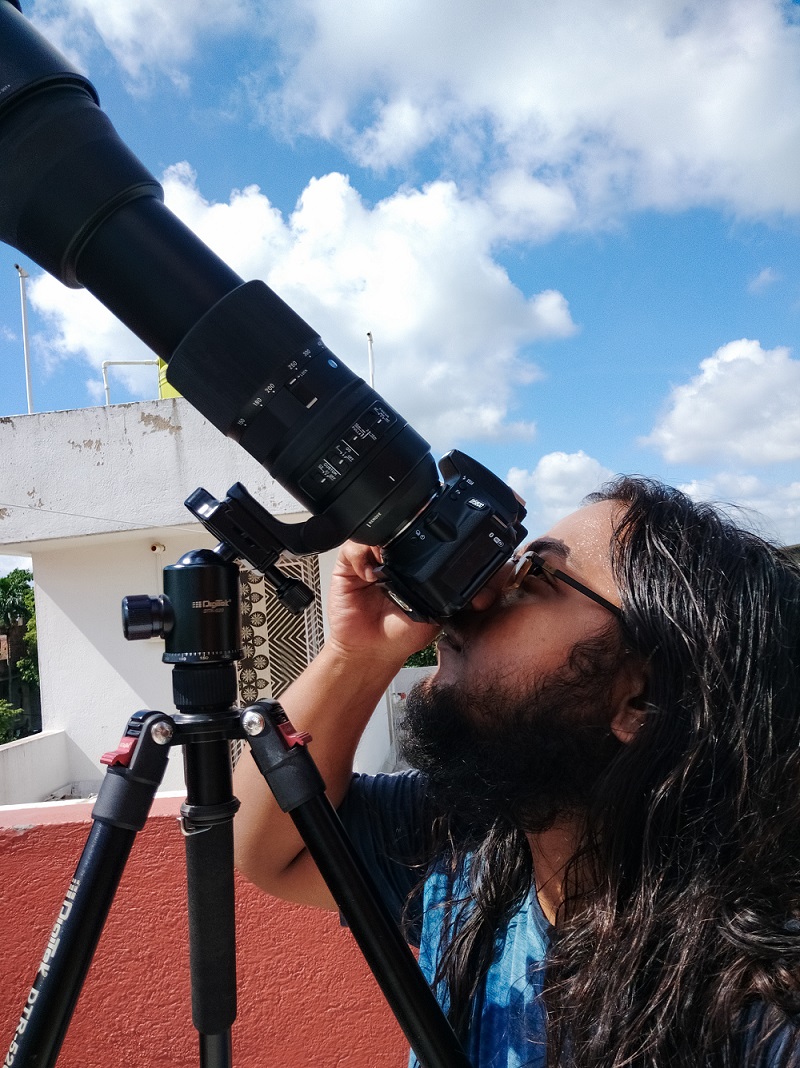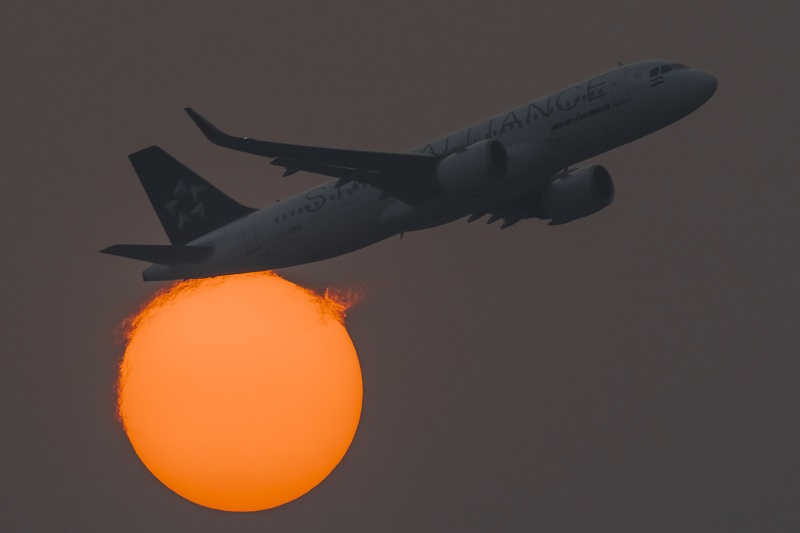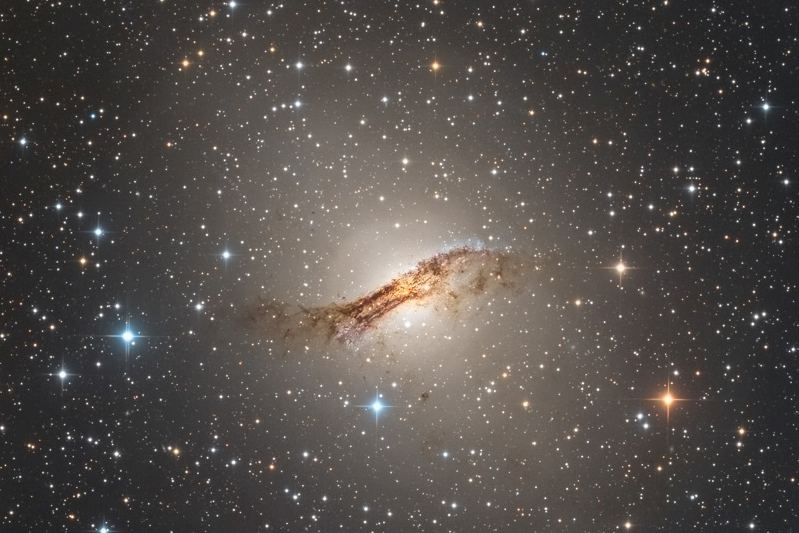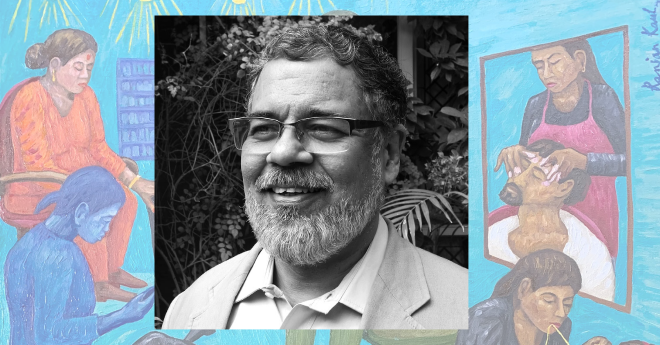
Soumyadeep Mukherjee - Astrophotographer
Soumyadeep Mukherjee is a PhD student at IITK. His photo, A Year in the Sun, won the Astronomy Photographer of the Year competition in the “Our Sun” category, held by Royal Museums Greenwich. He is the first Indian to win an award in the competition. Today, he talks to us about how he felt about winning the award and his experiences with astrophotography.
I was actually informed that my photo had won the award three months ago. I participated in the contest last year as well, but my photos did not win in any category then but two of them were shortlisted. I was overjoyed to hear about it - I am the first Indian to win the award - but I was informed to keep this information under wraps until the organisation officially announced the winners for all categories, so when the news came out on the 15th of September I wasn’t taken by surprise. The photos had also already received some media attention. However, I did feel very happy to represent my country in the competition. This was its 14th edition, and though there had been Indian contenders in the past, nobody had won. It felt very good to represent India on such a well-known platform and, in a way, on the world stage like this.
I created this photo after embarking on a project to take a photo of the Sun every day for a year. I started this project in December 2020, during the lockdowns. Initially, I only wanted to take pictures of sunspots as the Sun rotated - the spots would complete their journey around the Sun in 12 to 14 days. But after that, I decided to extend the project to about a month - and from there a hundred days, then two hundred, then a year. I had plenty of time because I was cooped up at home. On most days, the Sun would be out so it would only take a few minutes to get a picture, but on other days, especially during the monsoon season, I would wait for hours on the terrace, doing work on my laptop, for the Sun to come out so I could take a picture. In fact, I had to extend the ‘year’ by six days, because on six days the Sun never came out from behind the clouds at all - so the project actually took a total of 371 days.

Year in the Sun
Image taken in Kolkata, India
I started taking photos of celestial bodies during the lockdowns, as well. My passion for photography started with street and wildlife photography. Whenever my family and I would go on holidays, I would try to take a few pictures of interesting or unusual things, something different from the ordinary ‘standing in front of monuments and buildings’ affair of most family vacations. However, when the lockdowns began, the streets all emptied out - so I looked toward the sky instead of the streets.
As I delved further into astrophotography, I looked for others with the same interests on social media who I could work with - beginners like me, so that we could develop our skills together. Sadly, there isn’t much awareness of astrophotography in India, so there aren’t many pursuing it, but I eventually managed to find a small pan-India group of novices. After a few people left the group because of waning interest, we, the four remaining members, noticed that we were all from West Bengal - and decided to rechristen our group “Astronomads Bangla”. We have all bonded over our shared interest in astrophotography and we help each other improve and move further.

Splash on the Sun

Centaurus A Galaxy
Astrophotography is fascinating and also tends to require a somewhat different set of skills than normal, everyday photography. Some photos can require tens of hours to capture and process - long ‘integration times’ are quite common. This is because most celestial objects, being very far away, don’t send much light directly at Earth - so to collect enough light from the object for it to appear in a photo, the camera shutter has to be kept open for minutes to even hours. In contrast, when taking a normal picture, the shutter will usually open and close in fractions of a second as the idea is to capture a moment. Filters are also commonly used - these only allow certain wavelengths of light to be captured, so that the raw image data from capturing the same object using several different filters can be combined and processed, in the end, into a single vibrant photo. A recent photo of mine even took 94 hours in total to capture and process!
In the end, however, I am still fairly new to this hobby - and if there is one quality that it has taught me to have over the past two years, it is patience. Patience is key to capturing a good photo in astrophotography - there are no instant results. I think this is a very useful lesson for people today as well - sometimes, you have to be able to sit still and wait - especially important when learning to do something new, because nobody can learn how to do everything in a single day. Even though I have been taking pictures for several years, and specifically astrophotography for two, I still feel like I have only scratched the surface of what techniques and artistry can be achieved - and I will learn more as I keep trying - but not without patience.
Winning an award also taught me that (though I am still incredibly grateful to have been awarded) they don’t magically make you better at what you do - they are recognition that what you have done is good. And, though external validation is always sweet, we ourselves are the sole arbiters of how we feel about what we do. So we should focus on pursuing hobbies that we personally enjoy and derive satisfaction from rather than trying to chase the next ‘big thing. This brings to mind one of my favourite movie dialogues, from 3 Idiots: “Kaabil bano - kaamyaabi jhak maar ke peechhe aayegi”. We should focus on improving ourselves, our abilities and our skills - recognition and success will follow closely behind.



